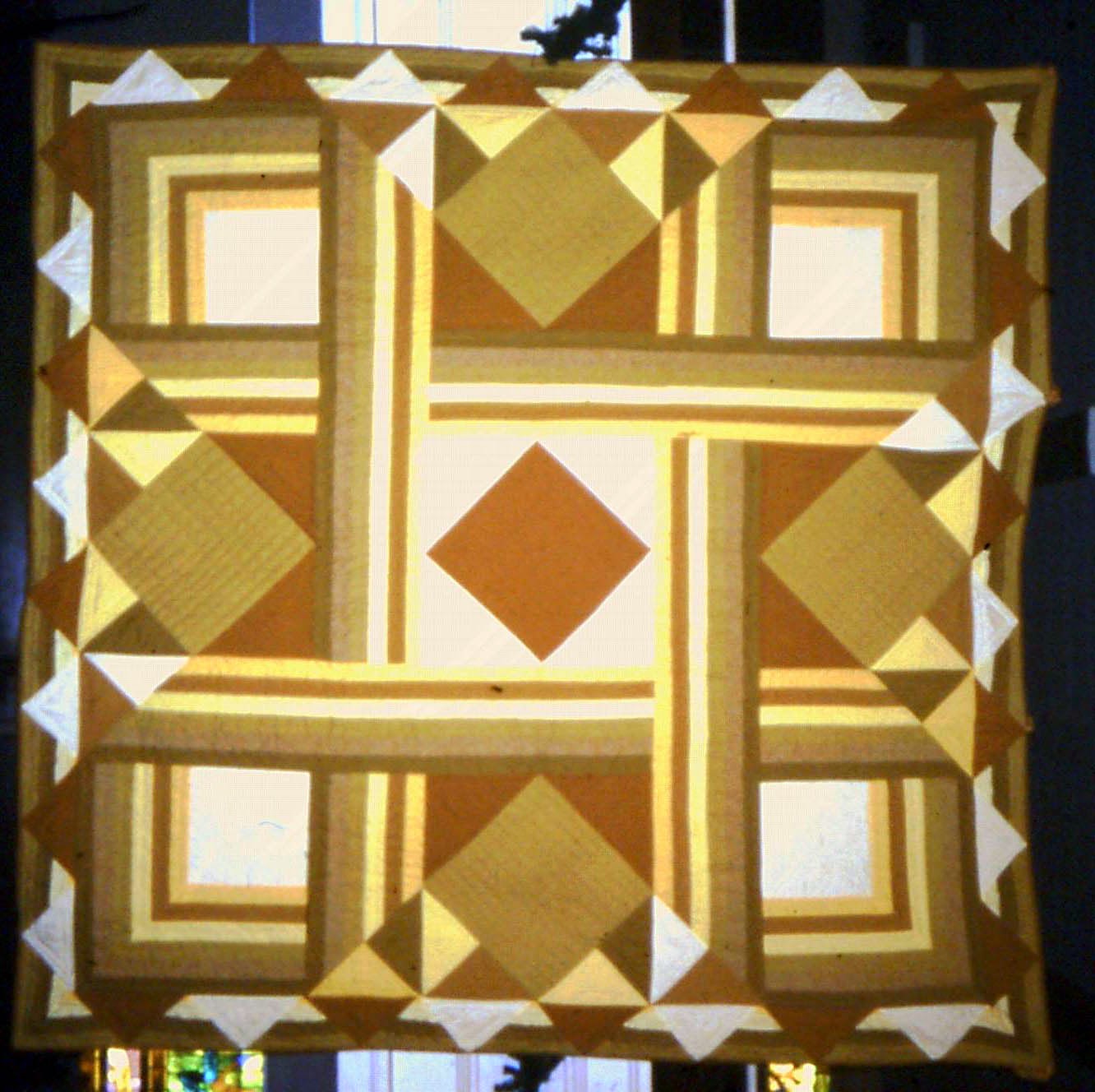Clearing out and organizing has become part of daily life since retirement and moving to a smaller house. I am still finding places to store my quilts. I find that I don't have decent photographs of all my quilts, including many which I no longer have. Here are some photos I have come across of quilts made in the last century!
A challenge by the Capital City Quilt Guild in Lansing was to make a quilt based on a book title. I chose Remembrance of Things Past by Proust. The center has these appliqued pansies, enhanced with colored pencil.
I had only been quilting a few years when a Hillsdale, MI neighbor asked me to maker her a quilt in colors she could not find. She liked this Georgia Bonesteel pattern. It was one of the largest quilts I have made, and also one of the more difficult. It is hand quilted.
Another early quilt is this Cactus Basket. I shocked some folk when I used the large scale floral print. I had seen such things done in antique quilts pictured in magazines and books. But it was not done much in the 1990s. On the wall is my Mary Pickfort collage.
I made this for my office when working as a church secretary, inspired by the stained glass windows in the hallway outside the office door. I guess it still hangs in there. I made matching window valances.
Life in the parsonage can be brutal. Conflicts within the church often overflows to the pastor and parsonage family. This quilt top shows a family in the center surrounded by those who have isolated them, and broken crosses to represent a broken church community no longer heeding God's will. It was good therapy but I never finished this quilt.
I had few skills and a small fabric stash and no money when I came up with the idea to use a traditional block design for Easter Sunrise.
The quilt looked horrid close up but on Easter Sunday it worked out pretty nice.
I had super confidence when young and never balked at trying anything. So to pay for my fabric habit I signed on to teach at a Jackson, MI quilt shop. This was a class sample for my first class.
I had few skills and had not even TAKEN a class, but learned from quilting around the frame with a quilt group at church and from books and magazines.
Don't ever be afraid to JUST DO IT. Perfection is the result of practice, so make all the mistakes you can and learn. Plus, no one ever said perfection was a requisite for a beautiful and loved quilt. What are collectors seeking today? Improvised, folk, imperfect, polyester, quilts--the very ones that not long ago were relegated for picnic blanket and pet use.



































